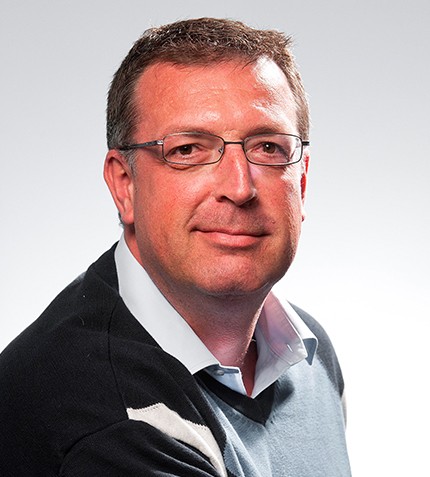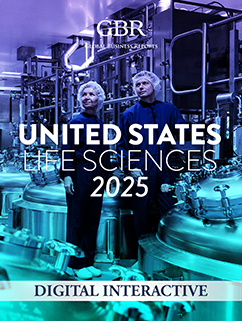
"SADC remains BME’s main focus area and our profitability in the region has not changed. BME has finalised two major investments in Sasolburg: a nitric acid plant, which was commissioned in 2012, as well as a calcium nitrate manufacturing facility in 2019. These facilities provide support for the SADC region from a logistics and supply chain perspective, reaching up to the Democratic Republic of Congo (DRC)."
RELATED PUBLICATION
ARTICLES FROM THIS PUBLICATION
Ralf Hennecke
GENERAL MANAGER: TECHNOLOGY AND MARKETING, BME
Can you give us an overview of BME’s history within Omnia Group?
BME started as a subsidiary of Mining Services International (MSI) in 1984 and was acquired by Omnia Group in 1987. Omnia Group started as a family business in 1953 and today is listed on the Johannesburg Stock Exchange (JSE).
The Omnia Group services clients worldwide and offers solutions in the fertilizer, chemicals and mining sectors. Within the mining arm of the group are BME and Protea Mining Chemicals - each providing different functions in the sector.
BME offers world-class products and services including explosives, bulk emulsions, initiating systems, technical services and software for surface and underground mining. Protea specializes in chemicals for the treatment of minerals, including additives and flocculants.
Could you highlight BME’s key global markets and elaborate on the global expansion strategy undertaken by the company?
BME is a South African company providing world class products and services to local and international customers in markets including coal, platinum, gold, nickel, manganese and iron ore.
BME’s first venture outside South Africa took place between 1992 and 1994, when we extended operations into Zimbabwe and Namibia. Later, the company moved into Tanzania and countries in West Africa and consolidated its foothold in the SADC region. While the Africa expansion drive continues, we also decided to diversify at a global level. Like many companies, we aimed to diversify in order to mitigate risks during commodity price downturns.
Today, BME has split its markets into primary and secondary targets; primary markets are fully integrated, while secondary markets are being approached only through selected products and services.
Despite our international expansion and growth, BME remains a proudly South African company and will continue to keep itself rooted in African soil.
The mining sector has weathered many challenges in the past years, while South Africa has suffered its own economic downturn. However, Omnia Group has progressed in its expansion and acquisitions. How has BME performed in light of this context?
SADC remains BME’s main focus area and our profitability in the region has not changed. BME has finalised two major investments in Sasolburg: a nitric acid plant, which was commissioned in 2012, as well as a calcium nitrate manufacturing facility in 2019. These facilities provide support for the SADC region from a logistics and supply chain perspective, reaching up to the Democratic Republic of Congo (DRC).
What are BME’s key differentiators?
Having completed an operational restructuring process, we have introduced a new enterprise resource planning (ERP) system and are giving IT connectivity special focus in Africa. This is indicative of BME’s alignment with the group’s pillar of operational excellence.
Timeous delivery remains a KPI we measure ourselves against, while innovation is increasingly becoming a key focus area for us. We’re especially pleased with two state-of-the-art products: firstly, our bulk underground and surface emulsion, for which BME holds the IP rights; and secondly, our AXXIS™ electronic detonator system, which is credited worldwide and has a solid reputation for being exceptionally safe, robust and easy to use. The AXXIS™ system will soon be launched in its newest generation, which we intend to take to market in the next few months.
Our in-house technical, technological and equipment-building capabilities give BME an unbeatable edge, coupled with a world-class safety record.
Discussion around ESG has intensified in recent years - what are your views regarding the industry’s application of ESG?
The conversation goes beyond safety issues. Building mines is a capital-intensive and long-term process, which means the environment needs to be 100% aligned with the mining operation. Nowadays, investors tend to ask questions around the availability of talent, legal transparency, water and electricity reliance, and political risks. New mines need to be built within communities that possess the capabilities to adopt them.
These aspects play into the cultural and psychological shift we are seeing around ESG in mining. People need to have the assurance of operating in safety. However, the industry is often burdened by fatigue and the pressure to generate returns for investors – among other challenges. To find a balance, we need to get back to basics; this means re-evaluating our processes, our systems and our people – and upskilling with sustainability in mind.












